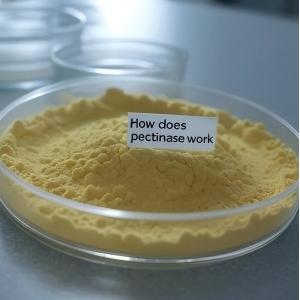How does pectinase work

Breaking Down the Basics
What is pectinase? It's an enzyme that helps break down pectin, a natural substance found in the cell walls of fruits and plants. Pectin is what gives fruit that firm, slightly crisp texture. But when you’re trying to get juice or speed up ripening, that firmness just gets in the way. That’s where pectinase steps in and does its thing.
The Enzyme in Action
How does pectinase work? It targets pectin molecules and breaks them apart. Pectin is made of long chains of sugars linked together, kind of like beads on a string. Pectinase cuts through these links, turning those long chains into smaller, simpler pieces. Once pectin starts to break down, the fruit softens, juice flows more easily, and everything gets a whole lot smoother—literally.
Why It’s So Useful
Think about making apple or grape juice. Without pectinase, the juice stays thick and cloudy because pectin holds everything in a gel-like mess. When pectinase is added, it clears things up by breaking the pectin into liquid-friendly parts. More juice gets extracted, and the texture becomes cleaner and brighter. It’s a huge win in the juice and wine industries.
Nature’s Helper
How does pectinase work outside of the lab? Plants actually use it on their own during ripening. Ever notice how ripe fruit gets softer and sweeter? That’s partly thanks to natural pectinase doing its job behind the scenes. It’s also used by fungi and bacteria to break down plant matter in soil. So whether it's on your kitchen counter or in the ground, this enzyme stays busy.


